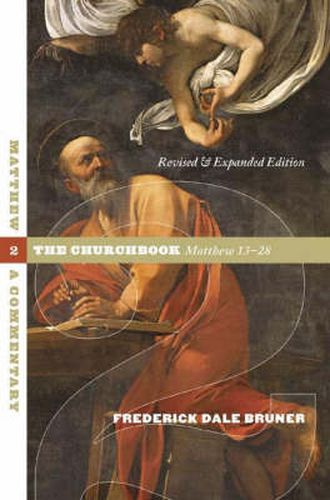Readings Newsletter
Become a Readings Member to make your shopping experience even easier.
Sign in or sign up for free!
You’re not far away from qualifying for FREE standard shipping within Australia
You’ve qualified for FREE standard shipping within Australia
The cart is loading…






This book is historical in drawing extensively on great church teachers through the centuries and on the classical Christian creeds and confessions. It is theological, in that, it unpacks the doctrines in each passage, chapter, and section of the Gospel. Consciously attempting to bridge past and present, Bruner asks both what Matthew’s Gospel said to its first hearers and what it says to readers today. Volume 2 of Bruner’s commentary is called The Churchbook , because Bruner sees Matthew 13-28 as concerned primarily with the life of the church and discipleship. Continuing his Volume 1 Christbook exposition, Bruner shows here how the focus of Matthew shifts, from Jesus teaching about who he is to teaching mainly about what his church is.Bruner’s Churchbook commentary divides the second half of Matthew according to its major ecclesiological themes: the church’s faith (chapters 13-17), the church’s love (18-20), the church’s history (21-23), the church’s hope (24-25), and the church’s passion (26-28). Eminently readable, rich in biblical insight, and ecumenical in tone, Bruner’s two-volume commentary on Matthew now stands among the best in the field.
$9.00 standard shipping within Australia
FREE standard shipping within Australia for orders over $100.00
Express & International shipping calculated at checkout
This book is historical in drawing extensively on great church teachers through the centuries and on the classical Christian creeds and confessions. It is theological, in that, it unpacks the doctrines in each passage, chapter, and section of the Gospel. Consciously attempting to bridge past and present, Bruner asks both what Matthew’s Gospel said to its first hearers and what it says to readers today. Volume 2 of Bruner’s commentary is called The Churchbook , because Bruner sees Matthew 13-28 as concerned primarily with the life of the church and discipleship. Continuing his Volume 1 Christbook exposition, Bruner shows here how the focus of Matthew shifts, from Jesus teaching about who he is to teaching mainly about what his church is.Bruner’s Churchbook commentary divides the second half of Matthew according to its major ecclesiological themes: the church’s faith (chapters 13-17), the church’s love (18-20), the church’s history (21-23), the church’s hope (24-25), and the church’s passion (26-28). Eminently readable, rich in biblical insight, and ecumenical in tone, Bruner’s two-volume commentary on Matthew now stands among the best in the field.